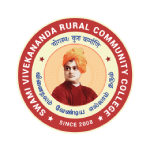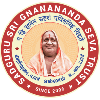Basic Garment Construction
Course Objectives
While studying the Basic Garment Construction, the student shall be able to:
- Comprehend the history of sewing machine and the parts of machine
- Detail about the garment details like tucks, pleats, darts etc.
- Explain the process of binding and facing
- Describe about closures, fasteners, pockets, collar and its types
Course Outcomes
After completion of the Course Basic Garment Construction, the student will be able to:
- Demonstrate the basic stitches used for garment construction
- Work on different neckline finishes
- Comprehend about the various types of fasteners, sleeves, collars
- Create yoke design
Block-1: Basic Stitches and Garment Details
Unit-1: Sewing Machine and Basic Stitches
History of Garment Construction – Sewing Machine – Basic Stitches – Seams – Seam Finishes – Hems
Unit-2: Garment Details
Garment Details – Darts – Tucks – Pleats – Gathers and Shirring – Frills or Ruffles – Flares – Godets
Block-2: Facing, Binding and Openings in Garment Construction
Unit-3: Facing and Binding
Preparation of uses of true bias strip – Cutting of Bias Strips – Joining bias strips Uses of bias strip – Different methods of Neckline Finishing – Facing – Binding
Unit-4: Plackets and Openings
Plackets – Standards of a good placket – Types of Placket – Inconspicuous Placket – Conspicuous plackets
Block-3: Closures, Fasteners and Sleeves
Unit-5: Closures and Fasteners
Fasteners – Buttons – Button Holes – Hooks and Eyes – Button Loops – Snaps – Fancy Buttons – Zippers – Elastics – Tapes and Cord – Velcro – Buckle
Unit-6: Sleeves
Sleeve – Sleeve types – set-in-sleeves – Modified armhole – Sleeve and bodice combined – Two Piece Sleeve
Block-4: Yokes, Collars and Pockets
Unit-7: Yokes
Yoke – Selection of Yoke – Creating Yoke Design – Preparing Patterns for Different types of Yoke – Partial Yoke – Midriff Yoke
Unit-8: Collars and Pockets
Collar – Type of collar – Pocket – Types of Pocket
Pattern Making and Grading
Course Objectives
While studying Pattern Making and Grading, the student shall be able to:
- Comprehend about taking body measurement for men, women and children
- Describe the pattern making principle and create paper pattern
- Manipulate the darts and convert it into seams
- Explain about grading of patterns
Course Outcomes
After completion of the Course Pattern Making and Grading, the student will be able to:
- Design and draft pattern of men, women and children garment
- Create and grade a pattern
- Measure and standardize the body measurement
- Construct patterns, relocate dart and do pattern alterations
Block-1: Measurement and Pattern Making
Unit-1: Body Measurement
Body Measurement – Ladies, Men’s and Children’s Measurement – Measurement Taking Method – Standardizing Body Measurement – Relative Length and Girth Measurement
Unit-2: Pattern Making
Pattern Making – Paper pattern – Principles of Pattern Drafting – Pattern Drafting for Children’s and Adults
Block-2: Pattern Grading, Layout and Cutting
Unit-3: Pattern Grading
Pattern Grading – Grading Technique – Principles of Pattern Drafting – Pattern Drafting for Children’s and Adults
Unit-4: Pattern Layout, Marking and Cutting
Preparation of Fabric for sewing – Pattern Layout – Pattern Marking – Pattern cutting
Block-3: Pattern Alterations and Child Garment Construction
Unit-5: Relocation of Darts and Pattern Alterations
Dart Manipulation – Shifting Blouse Dart to new position – Slash and Spread Method – Converting Darts to Seams – Incorporating dart into a seam – Pattern Alteration – Pattern alteration for figure irregularities
Unit-6: Design and Draft for Children’s Garment
Children’s garment – Bib – Panty – Jabla – Babasuit – A-line petticoat – Summer Frock – Yoke Frock – Knicker – Shirt
Block-4: Designing and Drafting of Women and Men’s Garment
Unit-7: Design and Draft for Women’s Garment
Women’s Garment – Saree Petticoat – Middi skirt – Middi top – Saree blouse – Salwar – Kameez – Nightie – Ladies pant
Unit-8: Design and Draft for Men’s Garment
Men’s garment – Slack shirt – Nehru Kurtha – Pyjama – churidhar – Pleated Trousers – T-Shirt – Bermudas
Fashion Designing and Embroidery
Course Objectives
While studying Fashion Designing and Embroidery, the student shall be able to:
- Comprehend about the terminologies used in Fashion industry
- Describe about the Elements and Principles of Design
- Explain about various types of trimmings and decorations
- Understand about the basic tools used for embroidery
- Brief about the various traditional embroideries of India
Course Outcomes
After completion of the Course Fashion Designing and Embroidery, the student will be able to:
- Explain about the different types of Design
- Demonstrate the various surface ornamentation work
- Competent in use of colours in designing
- Perform the various traditional embroideries of India
Block -1: Fashion Industry and Design
Unit-1 – Fashion Industry Terminology
Terms Related to Fashion industry – Basic terms – Industry Terms – Designer Terms
Unit-2: Design and Elements of Design
- Design
- Types of Design
- Elements of design
Block -2: Fashion Decorations and Principles of Design
Unit -3: Trimmings and Decorations
Trimmings and Decoration – Trimmings and Decoration Types – Fastening -Bias Trimming – Fullness – Decorative stitches – Edge finishing &Decoration – Lace, Ric Rac, Braid – Surface Work – Surface Ornamentation – Fashion Accessories
Unit -4: Principles of Design
Principles of Design – Harmony – Balance – Rhythm – Emphasis – Proportion
Block-3: Colour and Embroidery
Unit -5: Colour
Colour – Properties of Colour/ Colour Dimensions – Colour Theories/Chart – Colour Schemes – Colour Psychology – Warm and Cool Colours – Use of colour in designing – Visual effects of colour in dress
Unit -6: Embroidery
Embroidery – Tools and Equipment – Preparation step for Embroidery Work – General Rules for Hand Embroidery Stitch – Hand Embroidery Stitch
Block-4: Traditional Embroideries of India
Unit -7: Traditional Embroideries of India – I
Traditional Indian embroidery – Kashida of Kashmir embroidery – Phulkari of Punjab – Embroidery Gujarat
Unit -8: Traditional Embroideries of India – II
Embroidery of Rajasthan – Kasuti work of Karnataka – Chicken work of Lucknow – Kantha of Bengal
Garment Construction(Practical)
Choose the material for your design – prepare the Pattern-laying, marking, cutting & Construct the Any Five Of the following children’s garment – Calculate the cost of the garment.
- Bib, Panty
- Jabla
- Babasuit or romper

